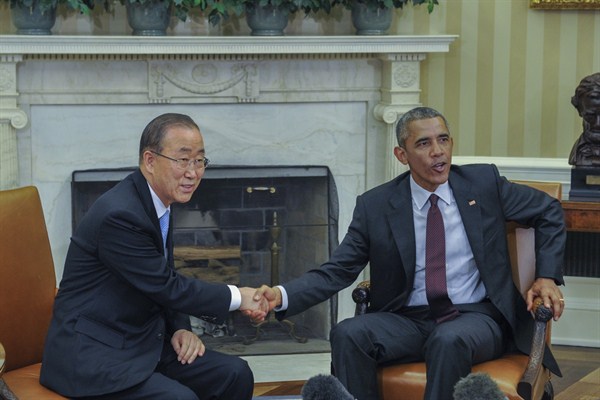Editor’s note: Guest columnist Neil Bhatiya is filling in for Michael Cohen, who will return next week.
On Monday, President Barack Obama unveiled the final version of the Environmental Protection Agency’s Clean Power Plan (CPP) rules. The new regulations, a tweak to initial rules that had been released in June 2014, are meant to provide the framework for individual U.S. states in meeting emissions-reduction goals in their electricity sectors. In forecasting a 32 percent reduction in emissions by 2030 from 2005 levels, the plan relies on incentivizing the adoption of low-carbon energy sources nationwide, especially solar and wind power. As Michael Levi, an expert at the Council on Foreign Relations, concluded, the rule is ambitious given existing political realities and keeps the United States on track to meet its commitment to greenhouse-gas reductions of 17 percent by 2020.
The ability to meet that commitment is crucial to the success of the Paris climate change talks later this year, known as COP21. Predictably, the new rules will face steep political and legal hurdles within the United States, especially entering an election year. While, to date, its opponents have not offered a comprehensive, credible alternative, they will no doubt raise political pressure on the administration and criticize the U.S. negotiating position in the international talks. The Obama administration, to its credit, has pressed on regardless of these pressures.

